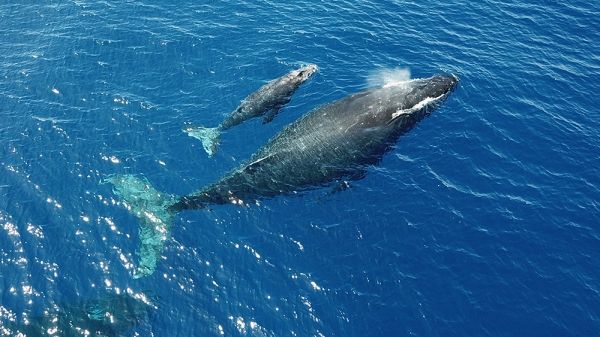In late December 2015, Ed Lyman started getting calls from whale watching companies on the island of Hawai‘i. “Ed, how are the whales off Maui?” tour operators were asking. “We’ve never seen them arrive this late.”
Lyman is the large whale entanglement response coordinator for Hawaiian Islands Humpback Whale National Marine Sanctuary. While the sanctuary coordinates and leads the effort to free whales from life-threatening entanglements, it relies heavily on tour operators, fishermen, researchers, and other members of the on-water community to help find and monitor them. That same on-water community plays a major role in monitoring the overall health of and risks to humpback whales throughout Hawai‘i. Lyman works closely with these groups.
So when more tour operators on other islands throughout Hawai‘i let Lyman and the sanctuary know that the whales seemed to be late that season, Lyman started calling around. He wanted to know if the lower sightings were just on a few of the islands, or in other areas in the Hawaiian Islands as well. But every island was reporting the same thing. Even Mexico’s disentanglement network reached out to Lyman, telling him that they were seeing low numbers. “It wasn’t just us,” says Lyman. “Something was happening.”
Each year, thousands of humpback whales migrate between Alaska and Hawai‘i. In parts of Alaska, like Glacier Bay National Park, they feed on huge swarms of small fish and krill throughout the summer. Then, in the winter months, they travel to the warm, shallow waters off Hawai‘i to mate, give birth, and raise their calves.
While in Hawai‘i, humpback whales do not eat. There are a few good reasons for them to forgo the feasts of Alaska during the winter. Primarily, expectant mothers migrate to Hawai‘i to reduce the risks of predation on their newborn calves. While not much will try to eat an adult humpback whale, calves are at risk of predation from orcas. In Hawai‘i, orcas are uncommon. Additionally, whales are born with a relatively thin layer of fat, or blubber. In Hawai‘i, humpback whale calves can stay warm while they nurse and produce the blubber they’ll need to survive the cold waters of Alaska.
Continue reading at NOAA.
Image via NOAA.


